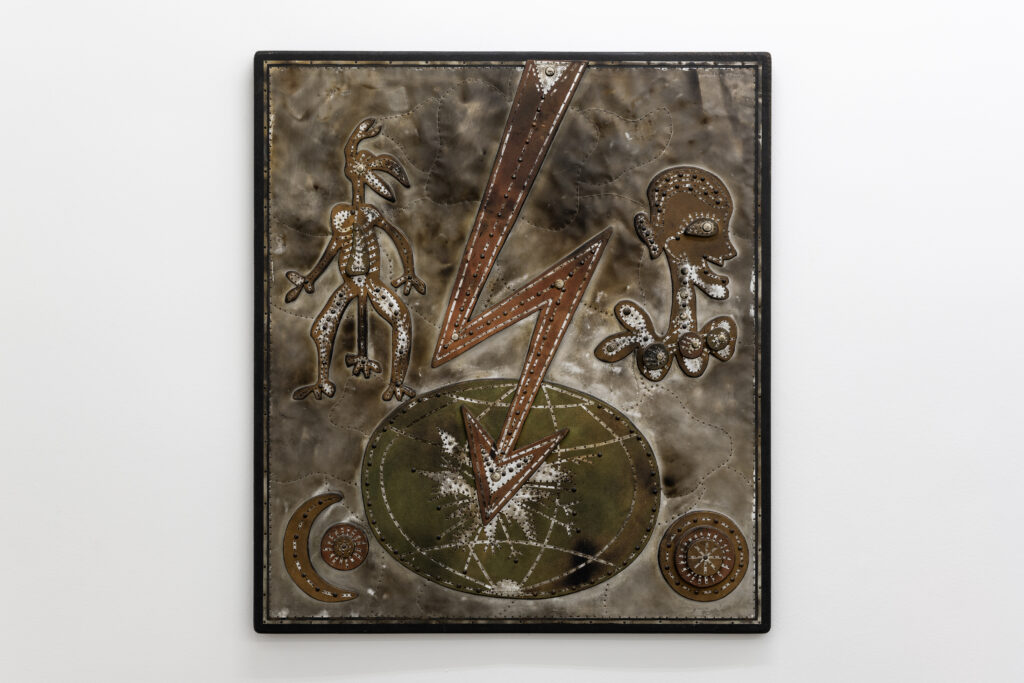Nesim Tahirović
Thunderbolt, Death and Devil
1993

This picture has a curious story of misattribution. For a long time, it was kept in the collection of the Devils Museum in Kaunas as a work by two unknown folk artists from the region, Ewald and Nesim, from the late 1980s. Not only is the provenance of the work unclear, but its technical and plastic qualities also did not fit the usual artisanal and iconographic categories of local folk art. With nothing to classify it as such, the museum kept it out of sight for a long time in the private office before deciding to bring it out and hang it in the museum’s lobby. The story the museum staff told about the painting at the time was that it depicted the end of the world and the birth of a new one. It predicted the collapse of the Soviet Union – the end of a world order that was difficult to imagine but clearly felt – and so it is possible that the anticipation and uncertainty, fear and excitement of the future unleashed the imagination and hands of the folk masters, leading them to create a painting that was stylistically anomalous.
After the restoration of the building of the Devils Museum in Kaunas in 2023, a new, official narrative about the origin of the work emerged. It was created in 1993 by Bosnian artist Nesim Tahirović (1941–2020). During the Bosnian war, the artist decided that by creating a painting depicting the end of the world and placing it in the very heart of evil, as if fighting fire with fire, he would contribute to ending the war. He identified the heart of evil as the Devils Museum in Kaunas, which holds more than 3,000 depictions of the wicked one. One can only guess why the real story of this painting has been forgotten. Was it too loaded, too realistic in a magical way? It is also easy to imagine that the story of a work that does not conform to any established narratives could be retold light-heartedly, and its technical, iconographic and stylistic motifs – an idiosyncratic mixture of modernist art and local Bosnian Christian and Muslim art – become a story of a different, more “local” version of the “end of the world”. After Tahirović handed over the painting to the museum, the Bosnian War continued for another two years.